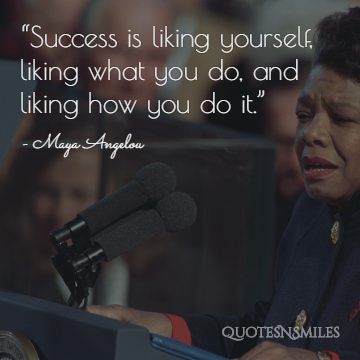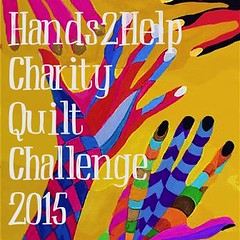The technical problem is fixed, and it was not the cable.
As promised, here is the tutorial for how to
add a flange binding
totally by machine.
Warning!!
This post is very picture heavy.
Here we go...
Determine the amount of fabric needed
If you aren't sure how to do that for "regular" binding, here's a quick refresher:
1. Measure the perimeter (all the sides) of the quilt.
2. Add 10-12" corner turning allowance, etc.
3. Divide that number by the width of your binding fabric to determine how many strips you'll need.
4. To determine the amount of yardage needed, multiply the number of strips needed times the width you will cut your strips.
Example: a 40" x 50" quilt
40" + 40" + 50" + 50" = 180" + 12" = 192"
192" divided by 40" of usable width of fabric = 4.8 strips - round up to 5 strips
5 strips x 2 1/2" = 12 1/2" = 3/8 yard (13 1/2")
It is a little different when determining yardage for a flange binding because you will be using two different fabrics and they are cut two different sizes.
For this sample, I used red for the flange and blue for the outside binding strip.
Cut the appropriate number of strips determined above as follows:
Flange Fabric (red) - 1 3/4" (1 7/8" for a bit larger flange)
Outside Binding (blue) - 1 1/2"
Diagonally piece the strips so you have two long pieces of fabric (one for the flange fabric and one for the outside binding fabric).
Press all of the seams open
After both strips are sewn together and pressed, sew them together along the long edge. I like to have the smaller piece (the outside binding fabric) on top. I just feel that it helps me be consistent and avoid flipped fabrics.
Once the strips are sewn together, press them to the outside binding fabric (blue)
With wrong sides together, press the long strip in half horizontally.
Align the raw edges of the newly sewn binding strip to the back of the quilt with the flange fabric facing up. (This is opposite of what you do when you are going to hand stitch the binding to the back.) I find it important to "walk" the binding around the quilt to prevent the seams of the binding from ending up at the corners. If they are there, it is quite challenging to fold it over because of the bulkiness.
Using a walking foot if you have one and leaving a 8-10" tail at the beginning, sew the binding strip to the quilt. (I tend to sew with a slightly large 1/4" seam allowance and have no problems.)
Stop sewing 1/4" (or whatever your seam allowance is) from the edge of the quilt. See the white mark in the picture below? That's where I stopped sewing. See the note below to know exactly where to stop perfectly every single time!
To find the stopping point, fold the binding strip
up to create a 45° angle (picture #1 below) and crease that seam (picture #2
below). Wherever your seam hits the crease is the correct stopping point
(picture #2 below). Sorry! The technical difficulties I was experiencing caused the deletion of the pictures using the red and blue fabrics.
Picture #1
Picture #2
Remove the quilt from the machine and fold the binding back upwards creating a diagonal fold (a 45 degree angle is formed). Be sure to align the raw edges of the binding with the raw edges of the quilt as in the picture below. (The raw edges create a straight line going up.)
While holding the diagonal fold in place with your finger, fold the binding down, making the fold even with the top of the quilt edge. Make sure that the binding underneath does not stick out beyond the fold. Pinning is not necessary, but it does help keep things lined up better (and makes taking a picture easier). :-)
Sew from the top fold with the same seam allowance as before. Continue to the next corner, where you will stop 1/4" (or the size of the seam allowance) from the corner, as before.
Once you miter the last corner, sew down the final side until you are approximately 8-10" from the end of the tail left from when you started adding the binding (not where you started sewing). The tails should overlap.
Remove the quilt from the machine and lay it on a flat surface.
Lay out the beginning tail so it is flat and smooth along the edge of the quilt. Fold the ending tail until it meets and "butts" up to the beginning tail (red in the picture below).
From the point of the meeting, mark a line on the ending tail that is equal to the width of the binding strip. In this case, it should be 2 3/4" (2 7/8" if you made the flange larger)
Cut the ending tail on the marked line. The strips will overlap an amount equal to the width of the binding strip (2 3/4" or 2 7/8").
To join the two strips, you will diagonally piece the strips as you did earlier. Careful turning will avoid twisted strips. Again, sorry for the "odd" pictures but the original ones are somewhere in cyberspace
Open the beginning tail and lay it flat, with the right side up. Flip the folded edge of the ending tail so that it is facing downward.
Rotate the folded edge of the ending tail so it is now upright and facing the left edge, near the beginning tail.
Open the ending tail so it is right side down and draw a diagonal line from the upper left corner to the lower right corner (as you did earlier when diagonally piecing the binding strips).
Pin and sew along the drawn line, just like you did when piecing the original binding strips. You may want to use a basting stitch here to verify that you have properly lined up the flange and outside binding fabrics. (See pictures below.)
Basted along the seam line.
And it worked! Yeah!! Make adjustments as needed and then stitch using the regular stitch length.
Trim 1/4" from the stitched line, towards the corner. Press the seam open.
Refold the binding, wrong sides together. Press if needed. Align the raw edge of the binding to with the raw edge of the quilt and finish sewing the binding strip to the quilt.
Press the binding out away from the seam so it is easier to fold it to the front of the quilt. Once it is folded over to the front, stitch in the ditch between the flange fabric and the outside binding fabric. Using a thread color that matches the flange fabric will "hide" the stitches. You might find it helpful to pin or clip the folded fabric so as to prevent it from shifting while sewing.
When you approach a corner, fold and stitch as you would if you were hand sewing. I like to use my Clover Wonder Clips to hold the corners in place.
First fold
Second fold
Secure in place for stitching
Simply turn the corner as you are stitching in the ditch. To make it easy and look nice, be sure to keep your needle in the down position when you are turning the corner.
It's hard to see the stitching on the back so I put my seam ripper down to point it out. By the way, I often use the seam ripper as a stiletto to help move the quilt along, especially when working in the corner.
Here's where the two tails were sewn together and then sewn down from the front. Not too bad!
I just love the touch of color that this flange adds to the quilt.
Plus, it doesn't take nearly as long to do as hand stitching. :-)
Good luck and let me know if you have any questions.












































